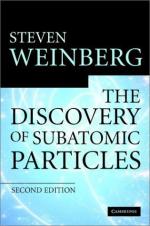|
This section contains 1,894 words (approx. 7 pages at 300 words per page) |

|
For nearly a century after the English scientist John Dalton announced his atomic theory in 1803, the concept that matter consisted of atoms and that atoms were tiny, indivisible particles was widely accepted among scientists. The concept of the atom and the origin of the word atom actually dated back to ancient Greece and the scientist/philosopher Democritus who defined atoms as matter "unable to be cut."
The atomic theory was profoundly shaken in the 1890s with English physicist J. J. Thomson's discovery of the electron. Thomson's work made it obvious that atoms are not indivisible, but, in fact, consist of smaller, subatomic particles.
In addition, the existence of the electron implied the existence of at least one other subatomic particle. Because electrons are negatively charged and atoms are electrically neutral, some positively charged subatomic particle must exist to balance the electron's negative charge. That particle, the...
|
This section contains 1,894 words (approx. 7 pages at 300 words per page) |

|


